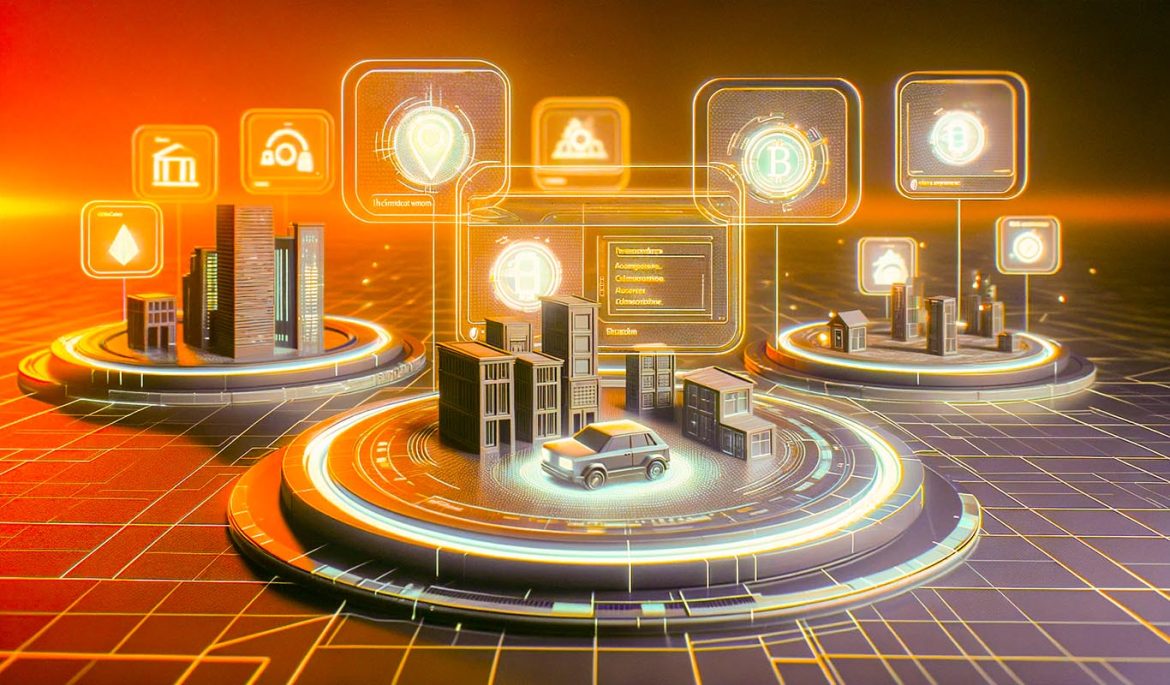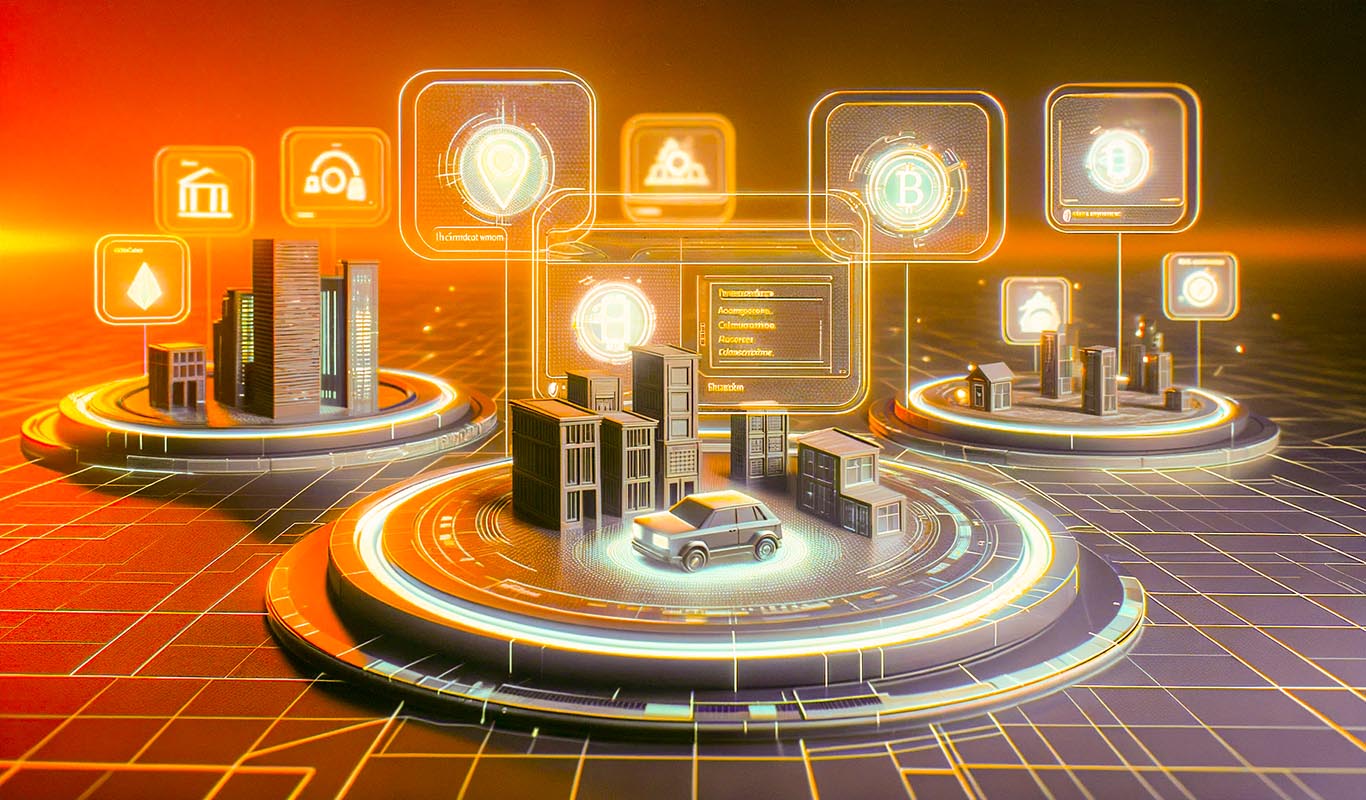The Approaching Tipping Point for Tokenization: A Deep Dive
Introduction: From Niche to Mainstream
The financial world is on the cusp of a revolutionary shift, one that promises to redefine how assets are managed, traded, and valued. Tokenization, the process of converting real-world assets (RWAs) into digital tokens on a blockchain, has evolved from a niche concept to a mainstream movement. This transformation is driven by the potential for a more efficient, transparent, and accessible financial system. As capital market infrastructure increasingly migrates on-chain, traditional finance players and crypto-native firms are redefining their strategic playbooks. This report explores the key drivers behind the tokenization trend, recent developments, and the potential implications for the future of finance.
Understanding Tokenization and Real-World Assets (RWAs)
Tokenization involves converting the rights to an asset into a digital token on a blockchain. These tokens can represent a wide array of assets, from traditional financial instruments like stocks and bonds to real estate, commodities, and even intellectual property. Real-world assets (RWAs) are the underlying assets that are being tokenized, bringing tangible value to the digital realm.
The benefits of tokenization are manifold:
Increased Liquidity
Tokenized assets can be traded more easily and efficiently than their traditional counterparts. This increased liquidity can attract a broader range of investors, including those who previously found the asset class inaccessible due to high minimum investment requirements.
Fractional Ownership
Tokenization allows for the fractionalization of assets, enabling smaller investors to participate in markets that were previously out of reach. For example, a high-value piece of real estate can be divided into smaller, more affordable tokens, allowing a wider range of investors to own a stake.
Enhanced Transparency
Blockchain technology provides a transparent and auditable record of ownership and transactions. This transparency reduces the risk of fraud and increases trust among investors and stakeholders.
Improved Efficiency
Tokenization streamlines administrative processes, reduces transaction costs, and accelerates settlement times. Smart contracts can automate various aspects of asset management, such as dividend distribution, compliance, and governance, making the process more efficient and less prone to human error.
Programmability
Smart contracts can be used to automate various aspects of asset management, such as dividend distribution, compliance, and governance. This programmability allows for the creation of more complex and sophisticated financial products and services.
The “Great Onchain Migration”: A Paradigm Shift
Pantera Capital refers to the current movement as a “great on-chain migration,” highlighting the significant shift of capital market infrastructure to blockchain networks. This migration is not merely a technological upgrade; it represents a fundamental redesign of the financial system’s infrastructure layer. The promise is a financial system that is programmable, interoperable, always-on, instant, and broadly accessible.
Several factors are contributing to this migration:
Technological Advancements
The development of robust and scalable blockchain platforms, such as Ethereum and Solana, has made tokenization more feasible and efficient. These platforms provide the necessary infrastructure for creating, managing, and trading tokenized assets.
Regulatory Clarity
While regulatory uncertainty remains a challenge, increasing clarity in some jurisdictions is encouraging institutional adoption of tokenization. As regulators provide clearer guidelines, more traditional financial institutions are likely to enter the space.
Institutional Interest
Traditional financial institutions are increasingly exploring tokenization as a way to improve efficiency, reduce costs, and attract new customers. Banks, asset managers, and other financial institutions are recognizing the potential of tokenization to transform their business models.
Demand for Alternative Investments
Investors are seeking new sources of yield and diversification in a low-interest-rate environment, driving demand for tokenized assets. Tokenization offers a way to access new asset classes and investment opportunities that were previously unavailable.
Recent Developments and Key Players
The tokenization landscape is evolving rapidly, with numerous projects and initiatives emerging across various sectors. Some notable developments include:
Ondo Finance and Pantera Capital’s $250 Million Fund
Ondo Finance and Pantera Capital have launched a $250 million fund, Ondo Catalyst, to invest in real-world asset (RWA) tokenization initiatives. This significant investment signals growing momentum for tokenization and underscores rising investor confidence in the space. The fund will target equity and token investments in emerging blockchain finance ventures.
Tokenized Stock Offerings
Companies are experimenting with tokenized stock offerings, allowing investors to trade fractions of shares on blockchain platforms. This can increase liquidity and accessibility for retail investors, making it easier for them to participate in the stock market.
Tokenization of Government Bonds and Treasury Bills
Several projects are exploring the tokenization of government bonds and treasury bills, offering investors a more efficient and transparent way to access these assets. Tokenized bonds can provide greater liquidity and lower transaction costs compared to traditional bonds.
Real Estate Tokenization
Real estate tokenization platforms are enabling investors to buy and sell fractions of properties, democratizing access to the real estate market. This allows smaller investors to participate in high-value real estate investments that were previously out of reach.
Key players in the tokenization space include:
Ondo Finance
A DeFi protocol focused on bridging the gap between traditional finance and decentralized finance through tokenization. Ondo Finance provides infrastructure for tokenizing real-world assets and integrating them into the DeFi ecosystem.
Pantera Capital
A crypto investment firm that has been actively investing in and promoting the tokenization of RWAs. Pantera Capital has been a major player in the tokenization space, providing capital and expertise to emerging projects.
Traditional Financial Institutions
Banks, asset managers, and other financial institutions are increasingly exploring tokenization as a way to improve efficiency and offer new products and services. These institutions are recognizing the potential of tokenization to transform their business models and attract new customers.
Blockchain Platforms
Ethereum, Solana, and other blockchain platforms provide the infrastructure for tokenization. These platforms offer the necessary tools and capabilities for creating, managing, and trading tokenized assets.
The Role of Ethereum and Other Blockchains
Ethereum has emerged as a leading platform for tokenization due to its smart contract capabilities and large developer ecosystem. The ERC-20 token standard has become the de facto standard for creating and managing tokens on Ethereum. However, other blockchain platforms, such as Solana, are also gaining traction in the tokenization space.
Solana’s high transaction throughput and low fees make it an attractive option for tokenizing assets that require frequent trading or high scalability. The competition between Ethereum and other blockchain platforms is driving innovation and creating more options for tokenization projects.
Challenges and Opportunities
While the tokenization of RWAs holds immense promise, several challenges need to be addressed:
Regulatory Uncertainty
The lack of clear and consistent regulations surrounding tokenized assets remains a significant barrier to adoption. Regulatory clarity is essential for institutional investors to enter the space with confidence.
Security Risks
Blockchain platforms and smart contracts are vulnerable to security breaches, which could result in the loss of funds or assets. Robust security measures are necessary to protect tokenized assets from theft or loss.
Scalability Issues
Some blockchain platforms may struggle to handle the high transaction volumes required for large-scale tokenization. Scalability solutions are needed to ensure that tokenized assets can be traded efficiently and cost-effectively.
Interoperability
The lack of interoperability between different blockchain platforms could limit the liquidity and usability of tokenized assets. Interoperability solutions are needed to enable seamless trading and settlement across different platforms.
Custody Solutions
Secure and reliable custody solutions are needed to protect tokenized assets from theft or loss. Custody providers must offer robust security measures to ensure the safety of tokenized assets.
Despite these challenges, the opportunities presented by tokenization are vast:
New Investment Opportunities
Tokenization can unlock new investment opportunities for both retail and institutional investors. Tokenized assets can provide access to new asset classes and investment strategies that were previously unavailable.
Increased Financial Inclusion
Tokenization can make financial services more accessible to underserved populations. By lowering the barriers to entry, tokenization can democratize access to financial markets and investment opportunities.
Improved Efficiency and Transparency
Tokenization can streamline financial processes and increase transparency, reducing costs and risks. Smart contracts can automate various aspects of asset management, making the process more efficient and less prone to human error.
Innovation in Financial Products
Tokenization can enable the creation of new and innovative financial products and services. For example, fractional ownership of luxury assets, decentralized lending platforms, and tokenized derivatives can provide new investment opportunities and financial services.
Moving Beyond Speculative Cycles
Pantera Capital suggests that the crypto industry could be entering a new phase of growth, with signs indicating a shift away from speculative cycles. High on-chain activity, stablecoin adoption, and improving regulatory conditions are all contributing to this shift. The focus is increasingly shifting towards fundamental investing, driven by the need to attract institutional capital.
This transition requires a greater emphasis on solid fundamentals and real-world applications of blockchain technology, such as tokenization. As the industry matures, it is likely to see a greater focus on building sustainable and scalable businesses that address real-world problems.
The Future of Finance: A Tokenized World
The tokenization of RWAs is poised to transform the financial landscape in the coming years. As technology continues to evolve and regulatory clarity improves, tokenization is likely to become increasingly mainstream. The rise of tokenization mirrors the early days of ETFs (exchange-traded funds), suggesting a similar trajectory of growth and adoption.
In the future, we can expect to see:
Wider Adoption of Tokenized Assets
Tokenized assets will become more prevalent across various sectors, including real estate, art, commodities, and intellectual property. As more assets are tokenized, the financial landscape will become more diverse and dynamic.
Integration with Traditional Financial Systems
Tokenized assets will be integrated with traditional financial systems, allowing for seamless trading and settlement. This integration will enable traditional financial institutions to offer tokenized assets to their customers, further driving adoption.
New Financial Products and Services
Tokenization will enable the creation of new and innovative financial products and services. For example, fractional ownership of luxury assets, decentralized lending platforms, and tokenized derivatives can provide new investment opportunities and financial services.
Increased Institutional Participation
Institutional investors will increasingly allocate capital to tokenized assets, driving further growth and adoption. As institutional investors enter the space, they will bring capital, expertise, and credibility, further legitimizing tokenization.
Conclusion: A FarmVille Moment for Blockchain
The year 2025 is anticipated to be a crucial turning point for the widespread integration of cryptocurrency. It is expected to represent a “FarmVille moment” for blockchain technology, indicating a period of exponential growth and mainstream acceptance. The tokenization of real-world assets is at the forefront of this transformation, reshaping the financial landscape and offering new opportunities for investors and businesses alike. As the “great on-chain migration” continues, the future of finance is undoubtedly being tokenized. This shift promises a more efficient, transparent, and accessible financial system, one that is programmable, interoperable, always-on, instant, and broadly accessible. The tokenization revolution is not just a technological upgrade; it is a fundamental redesign of the financial system’s infrastructure layer, one that will redefine how assets are managed, traded, and valued in the years to come.





